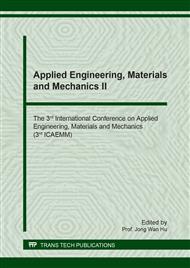p.196
p.202
p.208
p.214
p.220
p.225
p.233
p.238
p.244
Multi-Objective Optimization of Surface Roughness and Cutting Forces in Hard Milling Using Taguchi and Response Surface Methodology
Abstract:
Cutting forces and surface roughness are important output parameters affecting the machining performance and quality of any machined surface in hard milling. In order to obtain the best surface quality and highest productivity, the input-cutting parameters need be considered and chosen properly whenever hard milling is involved. Therefore, in this paper, an attempt is made to conduct the multi-objective optimization of the surface roughness (Ra) and the resultant cutting force (Ft) in hard milling of SKD61 steel by Taguchi method and Response Surface Methodology (RSM). Values of the input parameters for milling tests are chosen through the stability lobe diagram of a machine tool simulated by the use of Cutpro software. The Taguchi method is used for designing all of the milling experiments. The values of Ra and Ft are measured by a Surftest SJ-400 and a dynamometer, respectively, and then analysis of variance is conducted to find out the effect of machining process conditions on Ra and Ft. In order to get the low Ft and Ra, a multi-objective optimization is implemented with the use of the desirability function. The results reveal that the optimized machining conditions for Ra and Ft are a cutting speed of 100 m/min, a feed rate of 0.015 mm/tooth, and a depth of cut of 0.44 mm, with predicted Ra of 0.206 µm and Ft of 66.58 N.
Info:
Periodical:
Pages:
220-224
Citation:
Online since:
July 2018
Authors:
Keywords:
Price:
Сopyright:
© 2018 Trans Tech Publications Ltd. All Rights Reserved
Share:
Citation:


